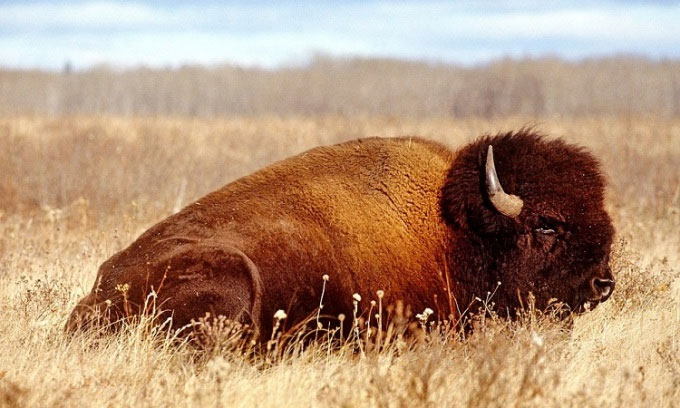Large herbivores such as bison can transform local ecosystems through grazing and nutrient cycling, contributing to the mitigation of climate change impacts.

Bison may replace the extinct woolly mammoth to restore ecosystems in the Holocene. (Photo: Hoberman Collection/Universal Images Group)
Scientists have introduced bison to the Arctic region of Russia to take on the role of the extinct woolly mammoth and help restore ancient ecosystems. Twelve plains bison (Bison bison bison) were brought to Ingilor Nature Park, a protected area spanning over 900,000 hectares in the northern part of the Yamal-Nenets Autonomous Okrug. The bison traveled 8,000 kilometers from a breeding facility in Denmark and completed their long journey three weeks ago. However, before exploring their new home, they underwent a month of quarantine, according to Live Science.
“Bison can easily adapt to the Arctic because historically, it was their natural habitat,” stated the Yamal-Nenets Autonomous Okrug’s Natural Resources and Environment Agency. “They can replace the role of the woolly mammoth, which went extinct 11,000 years ago.”
Plains bison and woolly mammoths once roamed the Arctic region of Russia during the late Pleistocene (2.6 million to 11,700 years ago). While a small population of woolly mammoths survived on an island off the coast of Alaska until about 4,000 years ago, the majority of these herbivores went extinct at the end of the last Ice Age, as the climate warmed and grasslands gave way to shrubs and trees.
According to Mary Edwards, a professor emerita of geography at the University of Southampton, UK, the late Pleistocene ecosystem lacked trees and had a relatively thick layer of soil. Permafrost stores carbon. Animals grazing on the icy plains contributed to shaping the landscape through grazing and nutrient cycling. “Animal dung makes the soil fertile, allowing plants to grow. They help create ecosystems,” Edwards noted.
Currently, to restore the Pleistocene landscape and its carbon absorption capabilities, scientists are relocating large herbivores like plains bison to various areas in the Arctic. Nikita Zimov, director of the Rewilding Project named the Pleistocene Park in Yakutia, has been bringing bison from Denmark since 2019. This year, Zimov introduced a herd of 24 bison, with 12 transferred to Ingilor Nature Park in exchange for 14 muskoxen (Ovibos moschatus). Muskoxen were nearly extinct by the early 1900s, with only a few scattered herds remaining in the Arctic region of Russia. With the muskoxen on their way to Pleistocene Park, Zimov shared his goal of restoring Arctic grassland ecosystems and employing various ecological mechanisms to mitigate climate change.
However, Edwards expressed skepticism about this plan. While animals can change ecosystems on a local scale, climate change during the Pleistocene may play a more significant role in shaping the landscape. “At that time, the weather was too cold and dry for shrubs and trees to grow, so grasses and various herbs covered the ground. Today’s climate is much warmer and wetter, meaning the ecosystem may not be suitable for large herbivores,” Edwards explained. But altering the landscape could lead to unintended consequences. Melting permafrost means more water in the soil. If all the shrubs are removed, the soil could become waterlogged. Standing water may contribute to thawing the ground and increase carbon release from the soil.




















































